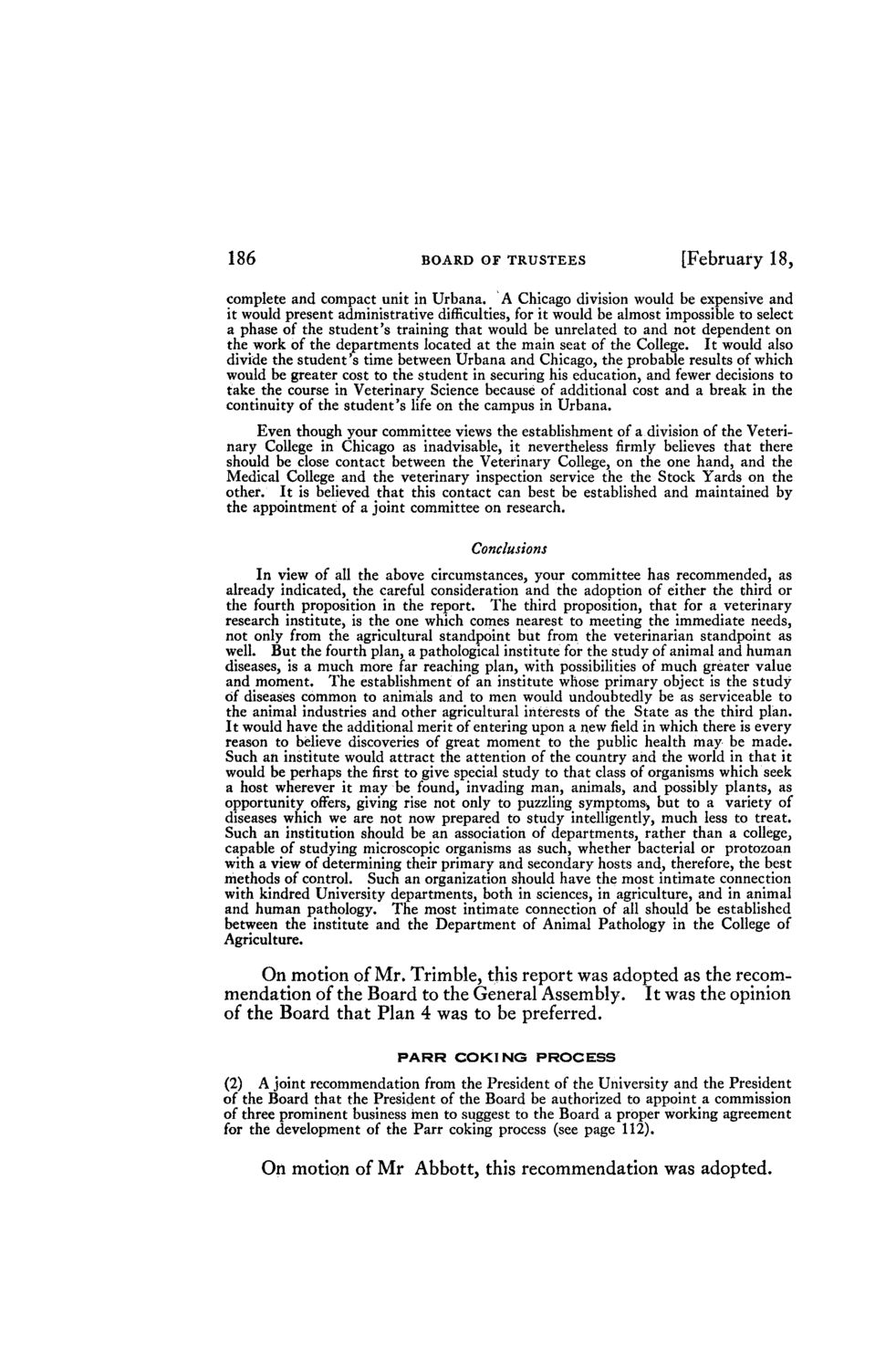| |
| |
Caption: Board of Trustees Minutes - 1922
This is a reduced-resolution page image for fast online browsing.

EXTRACTED TEXT FROM PAGE:
186 BOARD OF TRUSTEES [February 18, complete and compact unit in Urbana. A Chicago division would be expensive and it would present administrative difficulties, for it would be almost impossible to select a phase of the student's training that would be unrelated to and not dependent on the work of the departments located at the main seat of the College. It would also divide the student's time between Urbana and Chicago, the probable results of which would be greater cost to the student in securing his education, and fewer decisions to take the course in Veterinary Science because of additional cost and a break in the continuity of the student 's life on the campus in Urbana. Even though your committee views the establishment of a division of the Veterinary College in Chicago as inadvisable, it nevertheless firmly believes that there should be close contact between the Veterinary College, on the one hand, and the Medical College and the veterinary inspection service the the Stock Yards on the other. It is believed that this contact can best be established and maintained by the appointment of a joint committee on research. Conclusions In view of all the above circumstances, your committee has recommended, as already indicated, the careful consideration and the adoption of either the third or the fourth proposition in the report. The third proposition, that for a veterinary research institute, is the one which comes nearest to meeting the immediate needs, not only from the agricultural standpoint but from the veterinarian standpoint as well. But the fourth plan, a pathological institute for the study of animal and human diseases, is a much more far reaching plan, with possibilities of much greater value and moment. The establishment of an institute whose primary object is the study of diseases common to animals and to men would undoubtedly be as serviceable to the animal industries and other agricultural interests of the State as the third plan. It would have the additional merit of entering upon a new field in which there is every reason to believe discoveries of great moment to the public health may be made. Such an institute would attract the attention of the country and the world in that it would be perhaps the first to give special study to that class of organisms which seek a host wherever it may be found, invading man, animals, and possibly plants, as opportunity offers, giving rise not only to puzzling symptoms^ but to a variety of diseases which we are not now prepared to study intelligently, much less to treat. Such an institution should be an association of departments, rather than a college, capable of studying microscopic organisms as such, whether bacterial or protozoan with a view of determining their primary and secondary hosts and, therefore, the best methods of control. Such an organization should have the most intimate connection with kindred University departments, both in sciences, in agriculture, and in animal and human pathology. The most intimate connection of all should be established between the institute and the Department of Animal Pathology in the College of Agriculture. On motion of Mr. Trimble, this report was adopted as the recommendation of the Board to the General Assembly. It was the opinion of the Board that Plan 4 was to be preferred. P A R R COKING PROCESS (2) A joint recommendation from the President of the University and the President of the Board that the President of the Board be authorized to appoint a commission of three prominent business men to suggest to the Board a proper working agreement for the development of the Parr coking process (see page 112). On motion of Mr Abbott, this recommendation was adopted.
| |